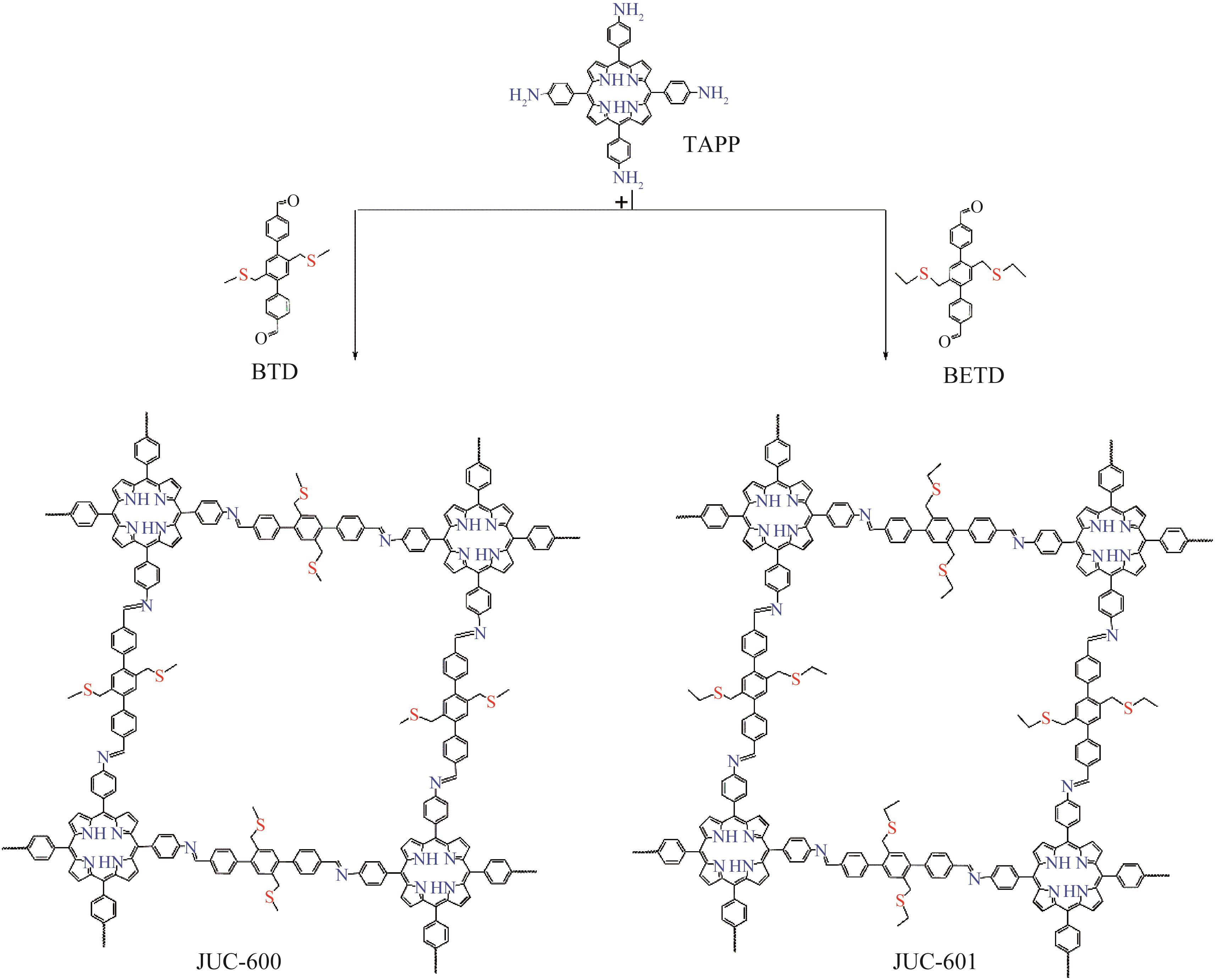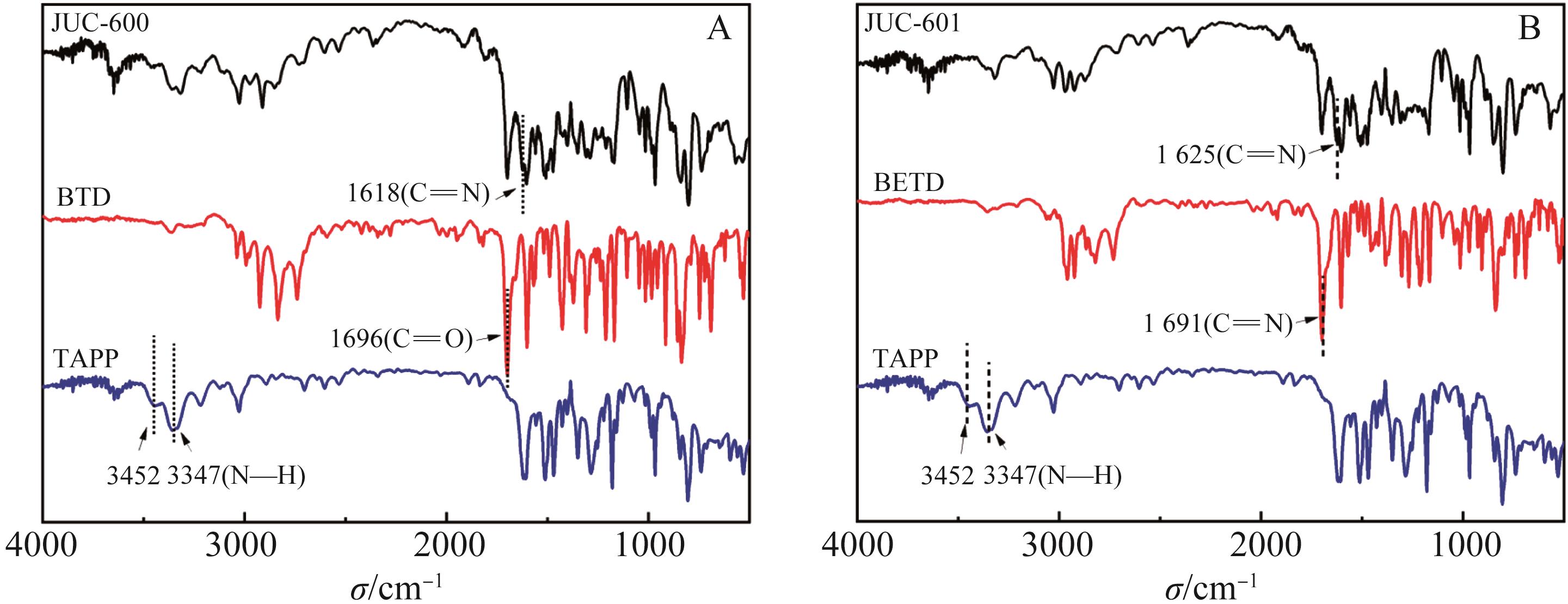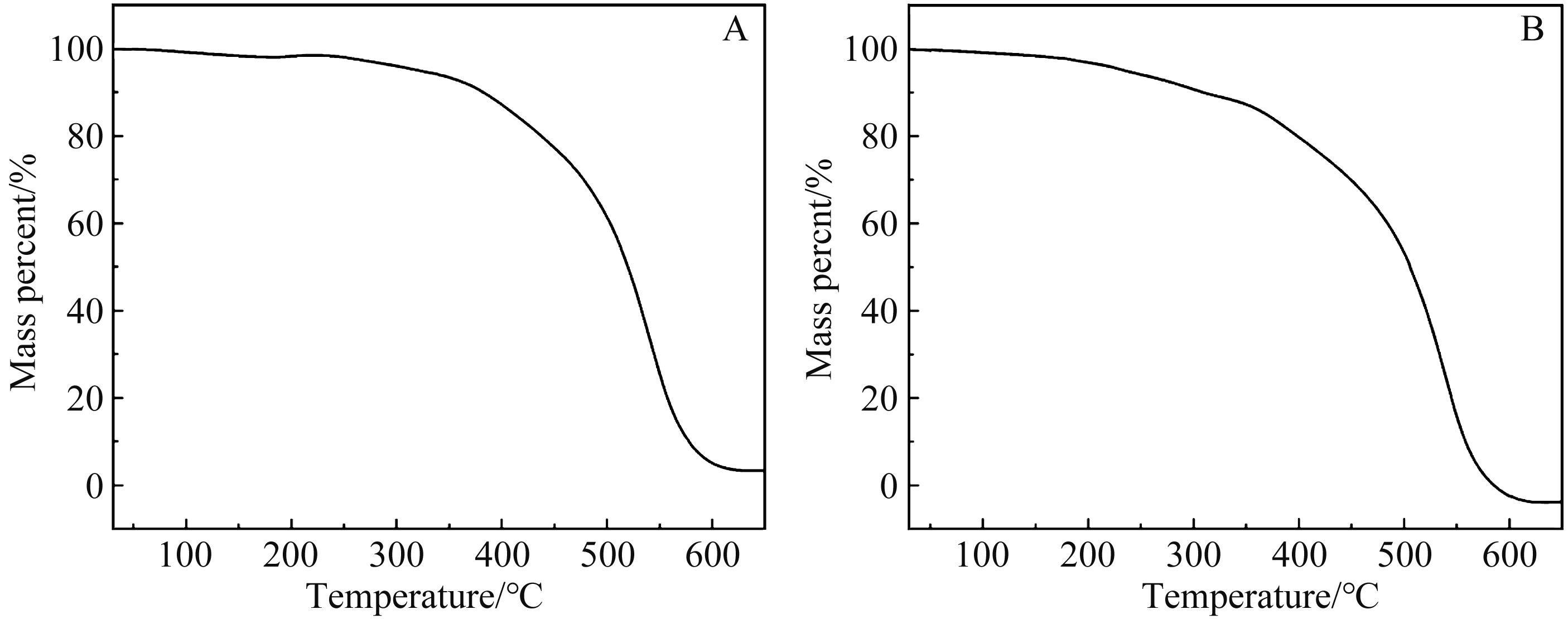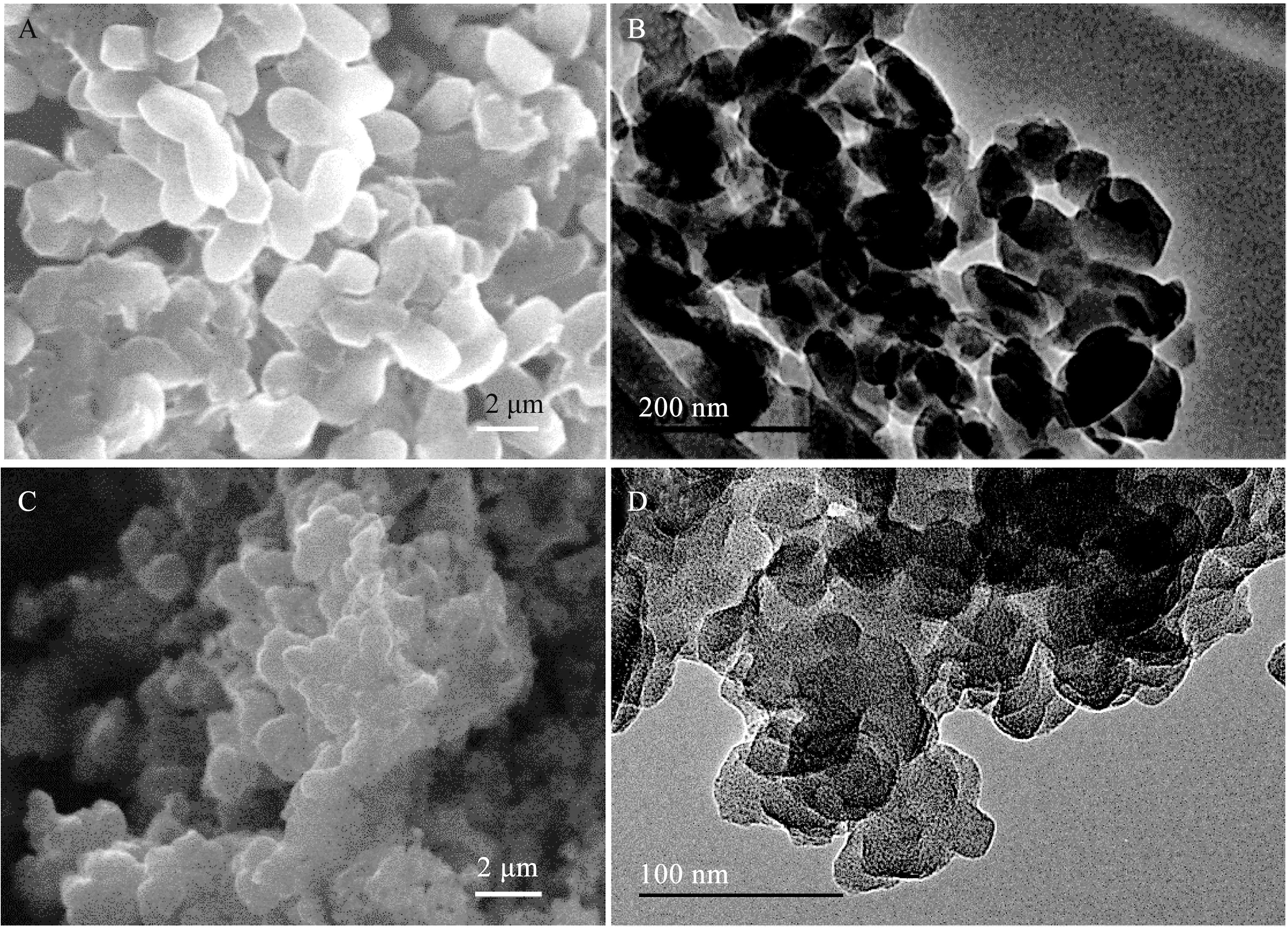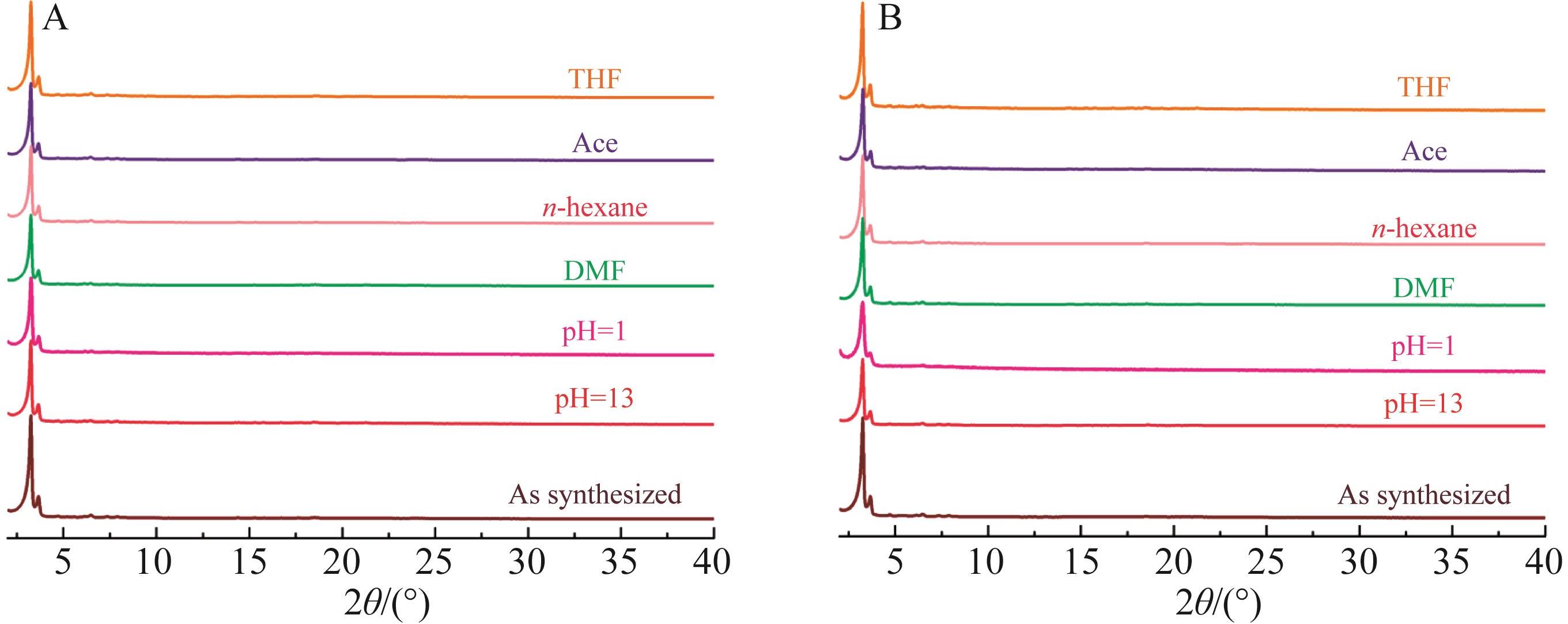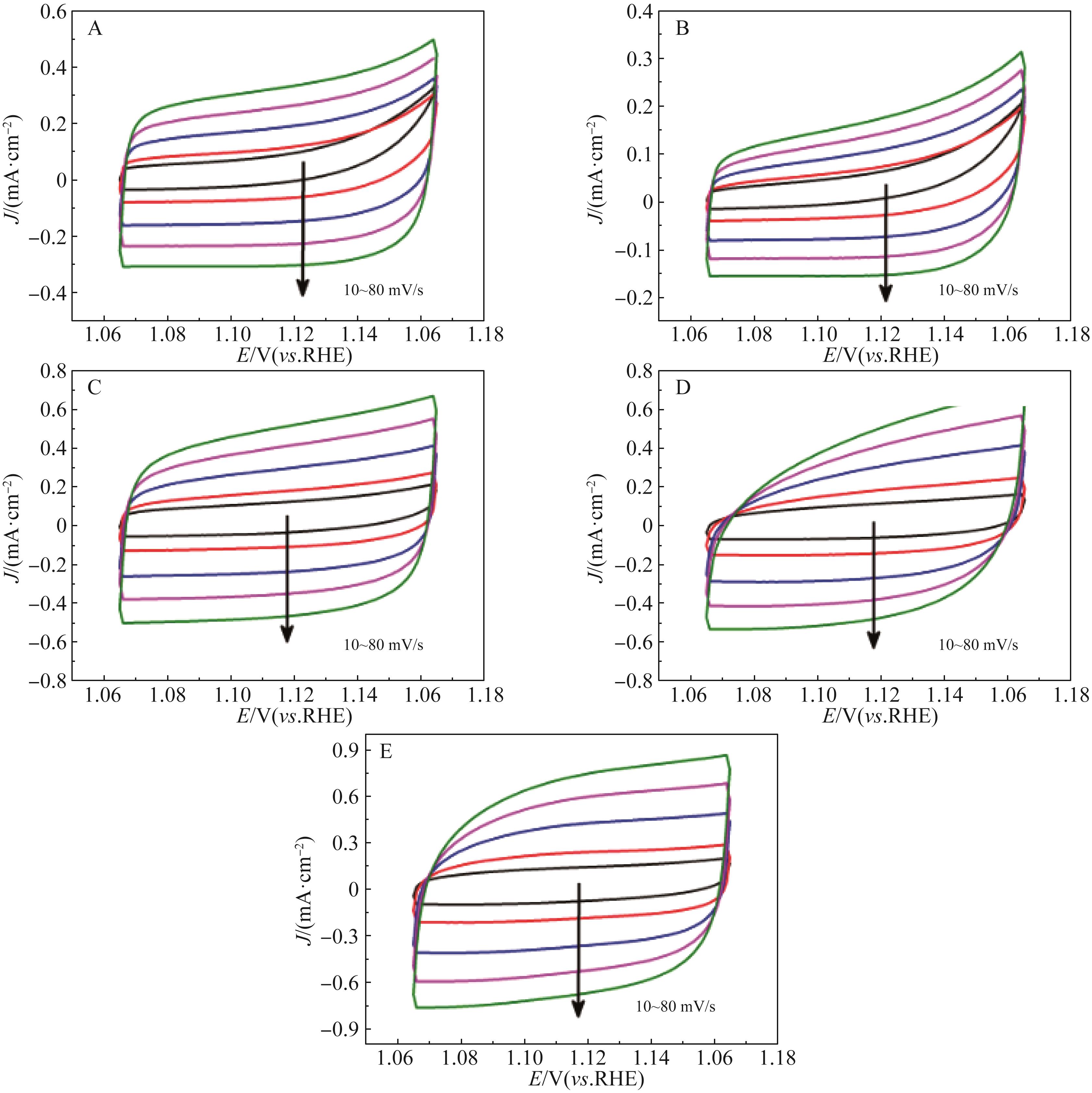
Chinese Journal of Applied Chemistry ›› 2022, Vol. 39 ›› Issue (4): 647-656.DOI: 10.19894/j.issn.1000-0518.210443
• Full Papers • Previous Articles Next Articles
Porphyrin⁃Sulfide⁃Based Covalent Organic Frameworks as Oxygen Reduction Reaction Electrocatalysts
Yi-Ying ZHANG1, Cui-Yan LI1, Jie ZHAO2, Xiao-Ming YU1, Qian-Rong FANG1( )
)
- 1.State Key Laboratory of Inorganic Synthesis and Preparative Chemistry,College of Chemistry,Jilin University,Changchun 130012,China
2.SINOPEC Research Institute of Petroleum Processing,Beijing 100083,China
-
Received:2021-08-31Accepted:2021-12-01Published:2022-04-01Online:2022-04-19 -
Contact:Qian-Rong FANG -
About author:qrfang@jlu.edu.cn
-
Supported by:the National Natural Science Foundation of China(22025504)
CLC Number:
Cite this article
Yi-Ying ZHANG, Cui-Yan LI, Jie ZHAO, Xiao-Ming YU, Qian-Rong FANG. Porphyrin⁃Sulfide⁃Based Covalent Organic Frameworks as Oxygen Reduction Reaction Electrocatalysts[J]. Chinese Journal of Applied Chemistry, 2022, 39(4): 647-656.
share this article
Add to citation manager EndNote|Ris|BibTeX
URL: http://yyhx.ciac.jl.cn/EN/10.19894/j.issn.1000-0518.210443

Fig.9 N2 adsorption-desorption isotherms and the T-plot for JUC-600 (A, B) and JUC-601 (C, D) at 77 K (Inset: pore-size distribution calculated by fitting on the NLDFT model to the adsorption data)

Fig.10 LSV curves (A), Tafel slopes (B), Cdl values (C), half-wave potential and initial potential (D) of each COFs in a 0.1 mol/L KOH electrolyte saturated with O2
| 1 | ARIC A S, BRUCE P, SCROSATI B, et al. Nanostructured materials for advanced energy conversion and storage devices[J]. Nat Mater, 2005, 4(5): 366-377. |
| 2 | STEELE B C H, HEINZEL A. Materials for fuel-cell technologies[J]. Nature, 2001, 414(6861): 345-352. |
| 3 | BRUCE P G, FREUNBERGER S A, HARDWICK L J, et al. Li-O2 and Li-S batteries with high energy storage[J]. Nat Mater, 2011, 11(1): 19-29. |
| 4 | LIM B, JIANG M, YU T, et al. Nucleation and growth mechanisms for Pd-Pt bimetallic nanodendrites and their electrocatalytic properties[J]. Nano Res,2010, 3(2): 69-80. |
| 5 | CHEN C, KANG Y, HUO Z, et al. Highly crystalline multimetallic nanoframes with three-dimensional electrocatalytic surfaces[J]. Science, 2014, 343(6177): 1339. |
| 6 | DEBE M K. Electrocatalyst approaches and challenges for automotive fuel cells[J]. Nature, 2012, 486(7401): 43-51. |
| 7 | AIJAZ A, FUJIWARA N, XU Q. From metal-organic framework to nitrogen-decorated nanoporous carbons: high CO2 uptake and efficient catalytic oxygen reduction[J]. J Am Chem Soc, 2014, 136(19): 6790-6793. |
| 8 | HUANG G, YANG L, MA X, et al. Metal-organic framework-templated porous carbon for highly efficient catalysis: the critical role of pyrrolic nitrogen species[J]. Chem Eur J, 2016, 22(10): 3470-3477. |
| 9 | FENG X, DING X, JIANG D. Covalent organic frameworks[J]. Chem Soc Rev, 2012, 41(18): 6010-6022. |
| 10 | DEBLASE C R, SILBERSTEIN K E, TRUONG T T, et al. β-Ketoenamine-linked covalent organic frameworks capable of pseudocapacitive energy storage[J]. J Am Chem Soc, 2013, 135(45): 16821-16824. |
| 11 | LIANG R R, QI Q Y, ZHAO X, et al. A study on constitutional isomerism in covalent organic frameworks: controllable synthesis, transformation, and distinct difference in properties[J]. CCS Chem, 2020, 2(2): 139-145. |
| 12 | 王志涛, 李辉, 颜士臣, 等. 一种沿骨架进行质子传导的二维共价有机框架的合成[J]. 化学学报, 2020, 78(1): 63-68. |
| WANG Z T, LI H, YAN S C, et al. Synthesis of a two-dimensional covalent organic framework with the ability of conducting proton along skeleton[J]. Acta Chim Sin, 2020, 78(1): 63-68. | |
| 13 | 李闪闪, 赵文娟, 李辉, 等. 偶氮苯功能化的光响应共价有机框架材料[J]. 高等学校化学学报, 2020, 41(6): 1384-1390. |
| LI S S, ZHAO W J, LI H, et al. A photoresponsive azobenzene-functionalized covalent organic framework[J]. Chem J Chinese Univ, 2020, 41(6): 1384-1390. | |
| 14 | BERTRAND G H V, MICHAELIS V K, ONG T C, et al. Thiophene-based covalent organic frameworks[J]. P Natl Acad Sci, 2013, 110(13): 4923. |
| 15 | 常建红, 徐国杰, 李辉, 等. 基于醌基的共价有机框架用于电催化析氧反应[J]. 高等学校化学学报, 2020, 41(7): 1609-1614. |
| CHANG J H, XU G J, LI H, et al. Quinone-based covalent organic frameworks for efficient oxygen evolution reaction[J]. Chem J Chinese Univ, 2020, 41(7): 1609-1614. | |
| 16 | 王禹婷, 杨天怡, 章应辉. 卟啉框架材料在光催化领域的应用[J]. 应用化学, 2020, 37(6): 611-619. |
| WANG Y T, YANG T Y, ZHANG Y H. Application of porphyrin-based framework materials on photocatalysis[J]. Chinese J Appl Chem, 2020, 37(6): 611-619. | |
| 17 | AUWÄRTER W, ÉCIJA D, KLAPPENBERGER F, et al. Porphyrins at interfaces[J]. Nat Chem, 2015, 7(2): 105-120. |
| 18 | COLLMAN J P, FU L, HERRMANN P C, et al. A functional model of cytochrome oxidase: thermodynamic implications[J]. Angew Chem Int Ed, 1998, 37(24): 3397-3600. |
| 19 | FAN S, WANG Z, LI C, et al. Self-assembly of coil-rod-coil triblock copolymers depending on lateral methyl groups at the interface of rod and coil segments[J]. Macro Res, 2015, 23(10): 909-915. |
| 20 | LU S, HU Y, WAN S, et al. Synthesis of ultrafine and highly dispersed metal nanoparticles confined in a thioether-containing covalent organic framework and their catalytic applications[J]. J Am Chem Soc, 2017, 139(47): 17082-17088. |
| 21 | XU N, DIAO Y, QIN X, et al. Donor-acceptor covalent organic frameworks of nickel(II) porphyrin for selective and efficient CO2 reduction into CO[J]. Dal Trans, 2020, 49(44): 15587-15591. |
| 22 | Materials Studio ver. 7.0; Accelrys Inc.: San Diego, CA.[CP].https://www.3ds.com/products-services/biovia/products/molecular-modeing-simulation/biovia-materials-studio/. |
| [1] | Hao FU, Wan-Qi XIONG, Zhen WANG, Ai-Hong DUAN, Li-Ming YUAN. Covalent Organic Framework Material Derivative of Chiral Camphor Used as High Performance Liquid Chromatography Stationary Phase for Resolution of Racemates [J]. Chinese Journal of Applied Chemistry, 2022, 39(9): 1371-1381. |
| [2] | Lin-Jie SHANG, Jiang LIU, Ya-Qian LAN. Covalent Organic Framework Materials for Photo/ Electrocatalytic Carbon Dioxide Reduction [J]. Chinese Journal of Applied Chemistry, 2022, 39(4): 559-584. |
| [3] | WANG Yuting,YANG Tianyi,ZHANG Yinghui. Application of Porphyrin-Based Framework Materials on Photocatalysis [J]. Chinese Journal of Applied Chemistry, 2020, 37(6): 611-619. |
| [4] | FU Chang'e, CHEN Wan, DAI Zhaoxia, XIANG Qizhi. Adsorption of Two Anionic Organic Dyes Methyl Orange and Alizarin Green Using a Magnetic Covalent Organic Frameworks [J]. Chinese Journal of Applied Chemistry, 2018, 35(5): 594-599. |
| [5] | QIAN Cunwei, HUANG Haijun, FEI Zhenghao, ZHANG Yuqing, WANG Dong, ZONG Qianshou. Synthesis and Bioactivity of New 1,2,4-Triazole Compounds Containing Thiazole and Thioether [J]. Chinese Journal of Applied Chemistry, 2015, 32(4): 399-404. |
| [6] | LUO Shixia1*, CHEN Xuan1, ZHANG Xiaoyi1, ZHU Huaiwu1, WEI Gang1*. Synthesis, Ion recognition, and Extraction Properties of Propanedithioether Linked Bis-β-diketone Molecule [J]. Chinese Journal of Applied Chemistry, 2014, 31(09): 1063-1068. |
| [7] | WANG Ya-Wei, SHI Wen-Jian*, CHEN Xuan, HAN Yue, YANG Qin-Lin, ZHOU Yan. Adsorption Kinetics and Thermodynamics of Cationic Dyes on Polythioether Type Cotton Cellulose [J]. Chinese Journal of Applied Chemistry, 2010, 27(07): 817-822. |
| [8] | DOU Yun-Qin, GAO Yan, YU Shu-Jie, LI Xiao-Li, SONG Hui-Mei, ZHANG Li-Chao, CAO Guo-Yang, GU Xiao-Qiang, LI Tie-Chun, HONG Zi-Ming, ZHANG Han-Qi. Identify of the sulfur compounds in industrial mixed alkanes [J]. Chinese Journal of Applied Chemistry, 2009, 26(08): 993-995. |
| [9] | Liu Wanying, Lei Zhenglan, Lu Wei, Wang Jinkun. Plasma Oxidative Desulfurization of Organic Sulfides in Liquid Phase [J]. Chinese Journal of Applied Chemistry, 1997, 0(5): 83-85. |
| [10] | Wei Rongbao, Liang Ya, Wu Jinguo, Zhao Jun, Dong Zhixin. Study on the Synthesis and Property of New Organo-Tin Thermostabilizers [J]. Chinese Journal of Applied Chemistry, 1995, 0(5): 29-32. |
| [11] | Xu Yuwu, Zhang Chaocan, Dong Shihua . STUDIES ON CHELATING RESINS Ⅶ.SYNTHESIS AND ADSORPTION PROPERTY OF CHELATING RESINS HAVING THIOETHER BACKBONE AND POLYETHYLENE POLYIMNE SIDE CHAIN [J]. Chinese Journal of Applied Chemistry, 1988, 0(2): 74-76. |
| Viewed | ||||||
|
Full text |
|
|||||
|
Abstract |
|
|||||
